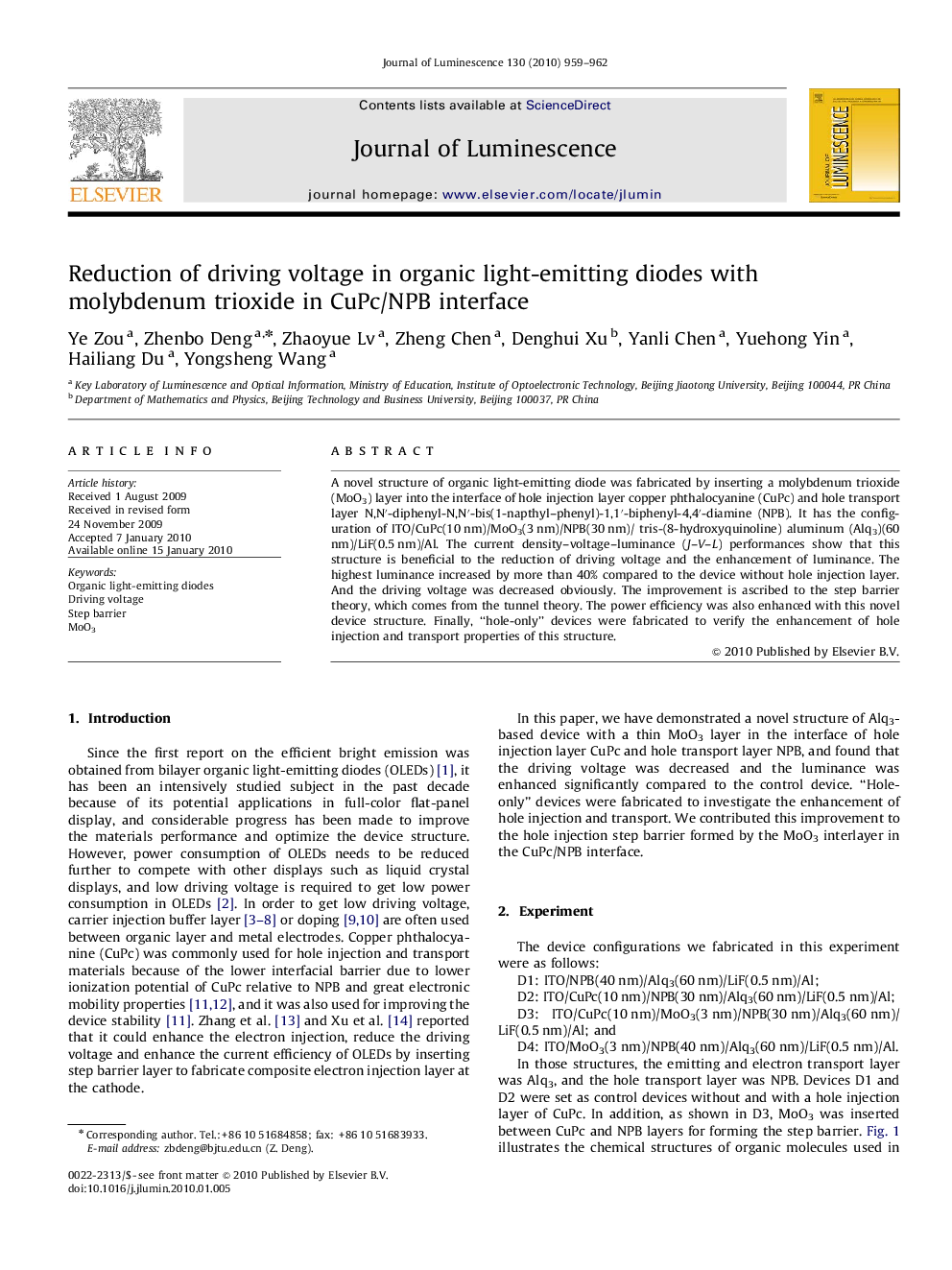| Article ID | Journal | Published Year | Pages | File Type |
|---|---|---|---|---|
| 5402762 | Journal of Luminescence | 2010 | 4 Pages |
A novel structure of organic light-emitting diode was fabricated by inserting a molybdenum trioxide (MoO3) layer into the interface of hole injection layer copper phthalocyanine (CuPc) and hole transport layer N,Nâ²-diphenyl-N,Nâ²-bis(1-napthyl-phenyl)-1,1â²-biphenyl-4,4â²-diamine (NPB). It has the configuration of ITO/CuPc(10Â nm)/MoO3(3Â nm)/NPB(30Â nm)/ tris-(8-hydroxyquinoline) aluminum (Alq3)(60Â nm)/LiF(0.5Â nm)/Al. The current density-voltage-luminance (J-V-L) performances show that this structure is beneficial to the reduction of driving voltage and the enhancement of luminance. The highest luminance increased by more than 40% compared to the device without hole injection layer. And the driving voltage was decreased obviously. The improvement is ascribed to the step barrier theory, which comes from the tunnel theory. The power efficiency was also enhanced with this novel device structure. Finally, “hole-only” devices were fabricated to verify the enhancement of hole injection and transport properties of this structure.
